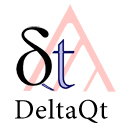FAQ
What is DELTA?
The DELTA format (DEscription Language for TAxonomy) is a flexible method for encoding taxonomic descriptions for computer processing. DELTA-format data can be used to produce natural-language descriptions, conventional or interactive keys, cladistic or phenetic classifications, and information-retrieval systems.
The original DELTA system has been under development since the mid 1970's by Mike Dallwitz at CSIRO Division of Entomology, Canberra, Australia. Later on, similar packages for processing of DELTA data were developed in the United Kingdom by Richard Pankhurst of the Royal Botanic Gardens at Edinburgh (PANKEY), in The Netherlands by Eric Gouda at the Botanic Gardens of Utrecht University (TAXASOFT), in Australia by Nicholas Lander at the Western Australian Herbarium (DMSWIN), in Spain by Antonio Valdecasas at the Museo Nacional de Ciencias Naturales (EDEL), in Germany by Gregor Hagedorn at the Institute of Microbiology, Federal Biological Research Center (DELTAAccess), in the United States by Michael Bartley and Noel Cross at the Arnold Arboretum of the Harvard University (NaviKey), in Italy by Claudio Rivetti and Riccardo Percudani at University of Parma (WebDelta), and in Brazil by Mauro J. Cavalcanti at Museu Nacional/Universidade Federal do Rio de Janeiro (DIANA), among several other DELTA programs.
In 1988, DELTA was adopted by the International Working Group on Taxonomic Databases for Plant Sciences (TDWG) as an internationally recognised standard for data encoding and exchange. Combining traditional taxonomic practices with modern information technology, the DELTA system has since became one of the most valuable and widely used computerized tools for biodiversity research.
For more information, visit http://delta-intkey.com/
What is Free DELTA?
The Free DELTA project was launched in April, 2000 with the aim of creating a complete cross-platform, free, open source software system for processing taxonomic descriptions coded in DELTA format. In July, 2008 the Free DELTA NG ("New Generation") Initiative was launched to promote the development and sharing of free, open source DELTA software tools entirely based on open source. The Free DELTA NG Initiative also defined the conditions that a given software tool should meet in order to be considered as a Free DELTA program. For more information, visit http://freedelta.sourceforge.net/
Building DeltaQt
Build environment
DeltaQt is developed using gcc (on Linux) and MinGW on Windows. It is expected that other compilers will work, however they have not been tested and may produces warnings that gcc or MinGW do not. If you compile DeltaQt using another compiler (for example, Visual Studio) then your feedback or patches are welcome, although there is no guarantee they will be incorporated (in general, they would be included unless they cause a different and unavoidable warning using gcc or MinGW).
Qt Creator is used as the development IDE on both Linux and Windows operating systems; using Qt Creator, however, is not a requirement and DeltaQt can be built without it.
LinuxThe easiest way to compile DeltaQt for Linux is using Qt Creator. If you do not want to install Qt Creator then DeltaQt can be built from the command line by typing: qmake && make. This will build the library, example program and the tests.
WindowsBuilding DeltaQt on Windows is a bit more complex than for Linux. By far the easiest way is to download the Qt SDK and use Qt Creator.
DependenciesDeltaQT depends on functionality provided by the core functions of the Qt framework and therefore depends on QtCore. Apart from the example application no modules apart from QtCore are required.
Hosted on SourceForge.net |
Site and Documentation |
DeltaQT |
 |
